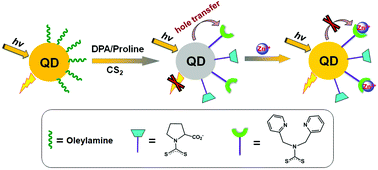A quantum dot-based “off–on” fluorescent probe for biological detection of zinc ions†
Abstract
Since

- This article is part of the themed collection: 2013's Top 25 most read Analyst articles
* Corresponding authors
a
Institute of Applied Chemistry, Department of Chemistry, East China University of Science and Technology, Shanghai 200237, P. R. China
E-mail:
zhongxh@ecust.edu.cn
Fax: +86 21 6425 0281
Since

 Please wait while we load your content...
Something went wrong. Try again?
Please wait while we load your content...
Something went wrong. Try again?
H. Xu, Z. Wang, Y. Li, S. Ma, P. Hu and X. Zhong, Analyst, 2013, 138, 2181 DOI: 10.1039/C3AN36742H
To request permission to reproduce material from this article, please go to the Copyright Clearance Center request page.
If you are an author contributing to an RSC publication, you do not need to request permission provided correct acknowledgement is given.
If you are the author of this article, you do not need to request permission to reproduce figures and diagrams provided correct acknowledgement is given. If you want to reproduce the whole article in a third-party publication (excluding your thesis/dissertation for which permission is not required) please go to the Copyright Clearance Center request page.
Read more about how to correctly acknowledge RSC content.
 Fetching data from CrossRef.
Fetching data from CrossRef.
This may take some time to load.
Loading related content
